Cold plunging has been a regular part of my wellness routine since I took my first ice bath in a Morozko Forge tub at a biohacking conference in 2021. Since then, I’ve installed numerous cold plunge tubs in my home spa (we currently have six), testing them for comfort, temperature and a range of other factors.
These are my picks for various use cases (click the links to jump to my review of each tub):
- Best overall: Sun Home Cold Plunge Pro
- Best cooling performance: Morozko Forge
- Best design: The Plunge + Evolve Pro Chiller
- Most challenging: ReGen Blast
- Best cold/hot combo tub: The Plunge All-In
- Cheapest worth buying: Ice Pod Pro
- Best for small spaces: Inergize
- Best upright plunge: Polar Monkeys Star Treatment 2.0
- Best for couples: Sun Home 2-Person Cold Plunge
If you’re looking for general information about cold plunging, you can learn more in my in-depth article on cold plunging’s health benefits.
Best Overall: Sun Home Sauna Cold Plunge Pro
Pros
- Powerful cooling capability that can chill water down to 33 degrees (and can make ice).
- Low ongoing maintenance requirements thanks to ozone sanitation.
- Integrated design, with the pump, chiller and tub all combined into one sleek unit.
- Super quiet operation.
Cons
- Costs more than most people are willing to pay for a cold plunge.
- The unit is bulky and takes up a significant amount of space.
- The integrated tablet isn’t WiFi-enabled and doesn’t support custom on/off or sanitation schedules.
- Ozone and UV sanitation have to be enabled manually.
The Cold Plunge Pro has become my go to tub because, unlike all other units I’ve owned so far, it can actually make ice and keep the water at 33 degrees, even in triple-digit ambient temperatures.
The second feature I love about the Cold Plunge Pro is that it has the chiller and water filtration system built in, instead of relying on an external chiller. That looks better and is easier to maintain. The entire unit is also incredibly quiet, which means we can have dinner on our porch without being bothered by noise from the chiller.
Yet another feature that makes the Cold Plunge Pro Stand out from most of the competition is its ability to maintain high water quality without requiring chemical treatments. That’s in part because most pathogens don’t grow much at 33 degrees, but also thanks to the built-in combination of sediment filtration, and ozone/UV sanitation.
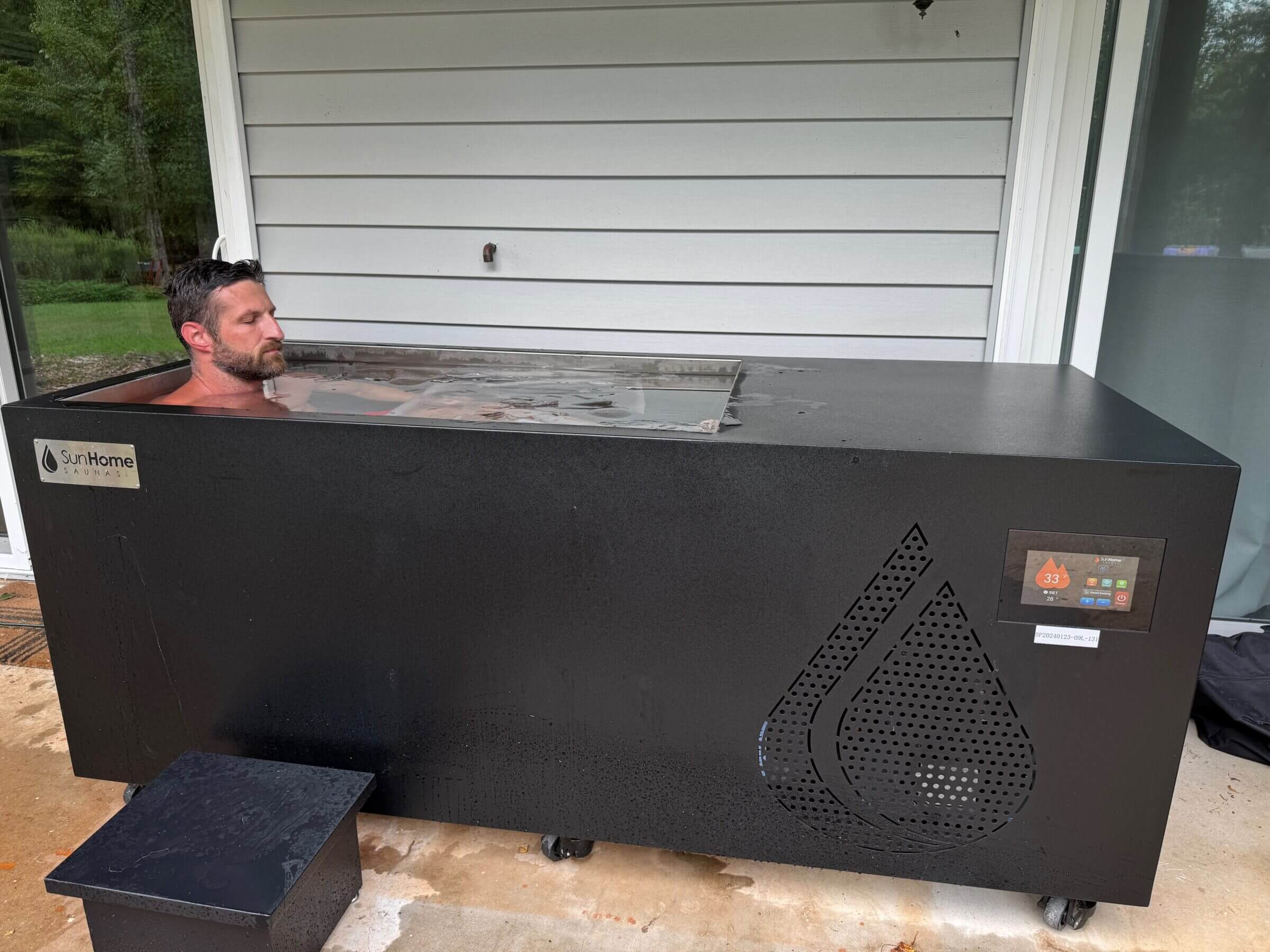
The only negative thing I can say about the unit’s sanitation capabilities is that you have to trigger the 15-minute sanitation cycle manually via the built-in touchscreen. While I have made that a part of my plunging routine (I press the button when I exit the tub), it would be more convenient if the system would automatically run a sanitation cycle once an hour (or just keep the ozone generator turned on 24/7 like the Morozko does).
The major downside to the Cold Plunge Pro is its price tag. At just shy of $10,000, it’s certainly not the most budget-friendly tub I’ve owned. But if you’re serious about cold plunging, it’s well worth the investment.
If you’re considering adding the Cold Plunge Pro to your home spa, make sure to use code MKUMMER200 to get $200 off your purchase.
You can also read my in-depth Cold Plunge Pro review to learn more about the tub.
Best Performance: Morozko Ice Bath
Pros
- Best cooling performance available.
- Good filtration performance.
- Slick design.
- Made in the USA.
Cons
- Very expensive.
- Difficult to install and move.
I first exposed my entire body to ice-cold water at a Biohacking conference back in 2021. Morozko Forge was exhibiting at that show and brought their ice bath for attendees to try. I had no idea what to expect, but remember I went through the five stages of grief in the two and a half minutes I stayed in the literally ice-cold water.
To put in perspective just how cold it was: I was sitting on a block of ice forming on the bottom of the 16-gauge stainless steel tub. To this day, I have yet to come across another cold plunge tub that can cool the water down to the freezing point while actively filtering and sanitzing it. That’s what puts Morozko Forge in a class of its own.
The reason why Morozko Forge offers such incredible cooling performance is because they designed a fully-integrated refrigeration system (instead of using a third-party “chiller box”).
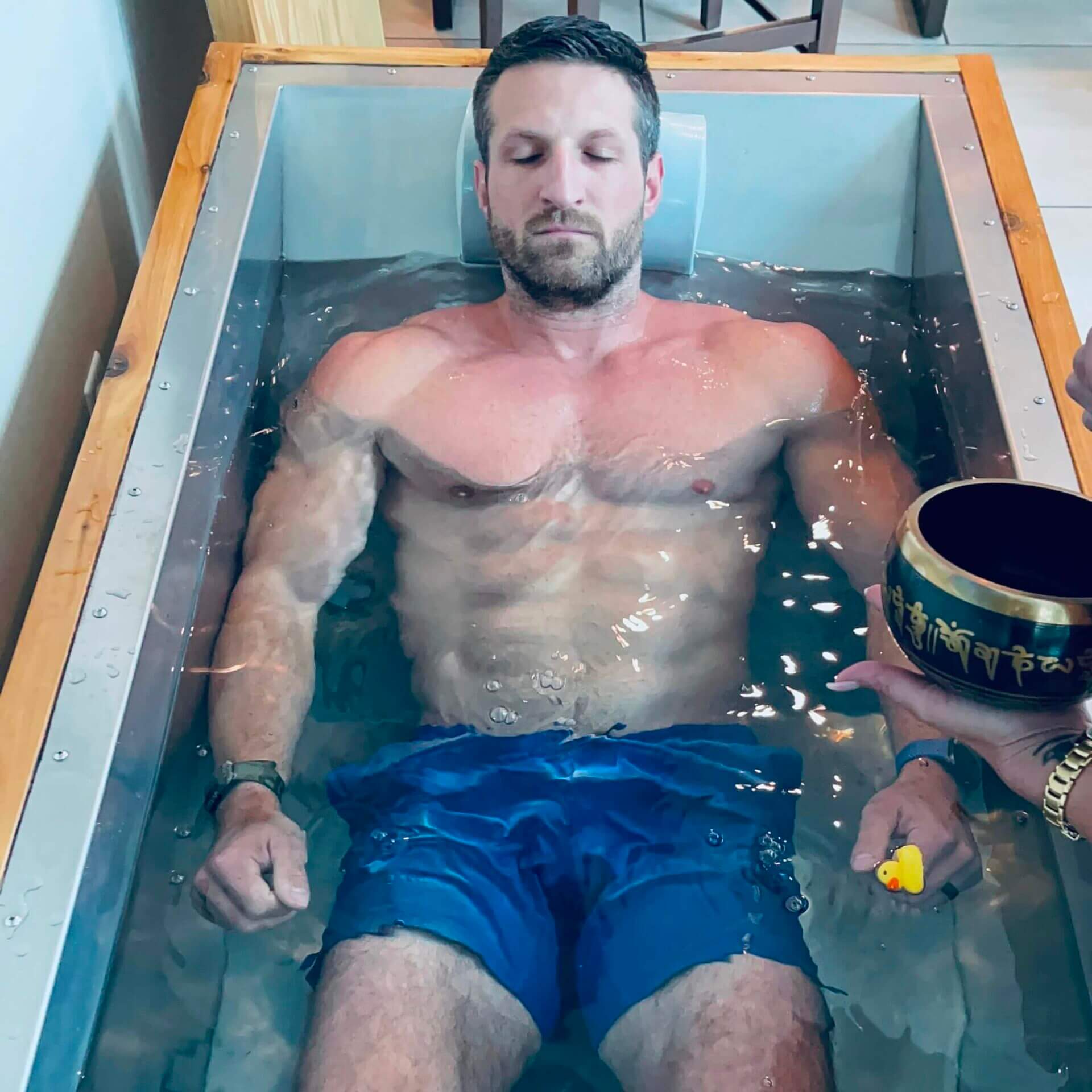

Unfortunately, that cooling performance, paired with the stainless steel tub and wooden accents, makes the Morozko Ice Bath one of the most expensive options on the market.
The tub is also relatively bulky, making it potentially difficult to fit through narrow door openings. And it’s almost impossible to move it around after installation.
As far as the filtration system is concerned, Morozko Forge uses a combination of microfiltration and ozone disinfection to keep the water clean and sanitary for extended periods.
I truly appreciate the design and materials used for this cold plunge tub, as well as the fact that it’s hand-made in the United States by a small business. If you have an outdoor spa area, an appreciation for natural materials, the necessary budget, and are seeking best-in-class cooling performance, the Morozko Ice Bath is for you.
For everyone else, this cold plunge tub — which starts at $13,900 — is likely beyond what you want to spend on an ice bath. The Morozko Ice Bath Pro, which offers even better cooling performance (for high-volume use) and a five-year warranty, sets you back at least $21,900.
Using code KUMMER500 will get you $500 off any model.
You can also learn more about the company’s products in my in-depth Morozko Forge review.
Best Design: The Plunge
Pros
- Sleek, premium design that looks great in almost any environment.
- Good cooling performance and outstanding filtration.
- Made by one of the most reputable companies in the industry.
Cons
- While the acrylic design looks great, it’s very heavy and difficult to move.
- The Evolve Standard chiller is loud and doesn’t offer ozone sanitation. The Pro chiller is 30% quieter and offers ozone, but it’s also more expensive.
The aptly-named Plunge was the first ice bath I ever owned, and it’s still one of my favorites, thanks in large part to its best-in-class filtration and sanitization system (if you opt for the Pro chiller), which leverages a clever combination of a sediment filter (to physically trap debris and particles) and ozone treatment (to kill viruses, bacteria and other pathogens).
I also appreciate The Plunge’s sleek design, which is something that’s often overlooked by cold plunge manufacturers who are (rightly) more focused on performance. The Plunge looks like a high-end acrylic bathtub, and it looks great in almost any setting.
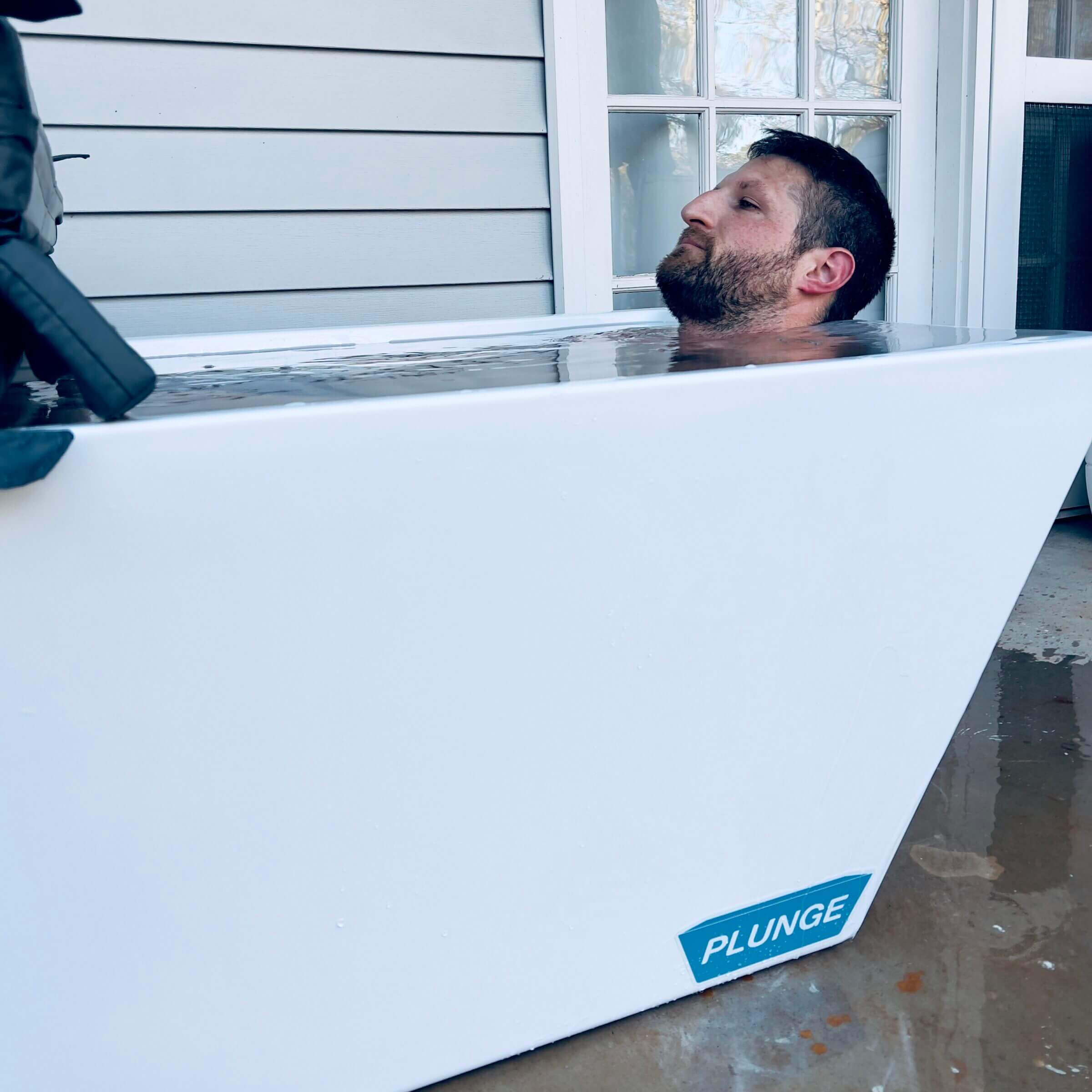
It’s worth noting that the company behind The Plunge offers a range of models at different price points, as well as two chiller options — a 5HP “standard” chiller that cools water to 39 degrees, and a 10 HP “pro” chiller than cools water to 37 degrees. You can also add an optional heater to any of the company’s models, allowing you to switch between a cold plunge and a hot tub.
I own the first generation of The Plunge, but recently had the chance to visit the company’s Sacramento headquarters to try out some of their new products, including the Plunge Gen 2 (see the photos of me in the new tub below).
The Gen 2 has an in-house designed chiller that matches the aesthetic style of the tub itself. It also boasts super quiet operation, easy filter changing (because the filter housing is part of the chiller), and a design that makes it easy to recline (which helps you relax). Perhaps most importantly, the new model has a slightly bigger interior than the Gen 1, allowing me (at six feet tall) to fully submerge my body (as opposed to having my knees or chest sticking out of the water).


One thing that sets Plunge apart from other companies is that they offer free white glove delivery to most states, and the shipping carrier takes back all packaging material (so you don’t have to worry about disposing of it).
To learn more about this tub and why I love it, check out my in-depth Plunge tub review.
The Plunge Gen 2 starts at $5,990 with the Evolve Standard Chiller (not recommended) or $7,490 if you go with the Evolve Pro Chiller, but if you use my discount code MK you can knock $250 off your purchase price (and this code stacks on top of other Plunge sales and promotions).
Most Challenging: ReGen Blast
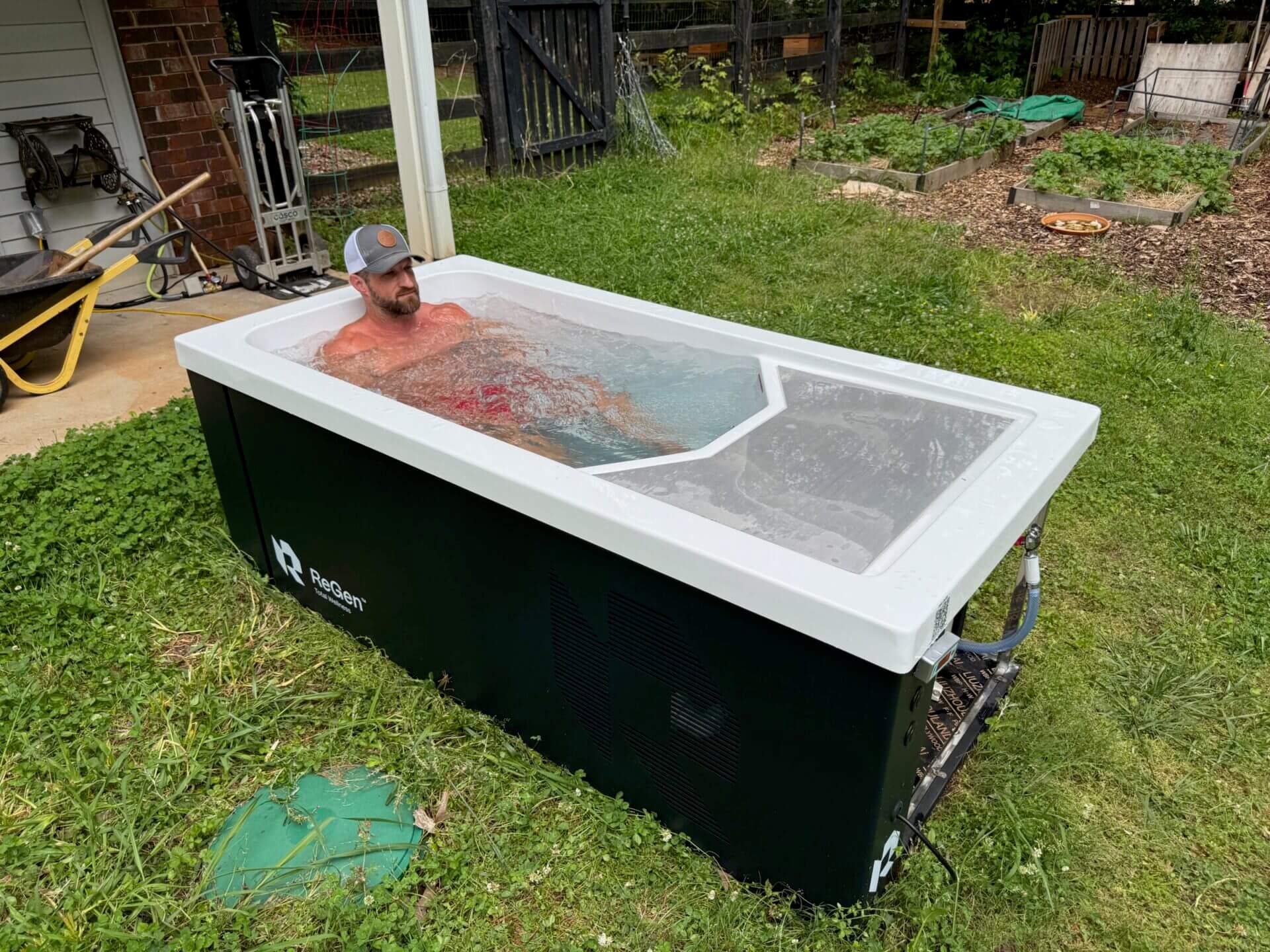
Pros
- Optional “high flow mode” that will challenge even the most experienced cold plungers.
- Minimal ongoing maintenance thanks to a commercial-grade water pump, ozone generator and oversized filter.
- Integrated design, with the pump, chiller and tub all combined into one sleek unit.
- Lower cost than comparable models.
Cons
- The stainless steel unit weighs 600 pounds when empty, which means that moving it is difficult.
- The commercial-grade chiller and water pump require a lot of energy (compared to less powerful models).
- The lack of WiFi connectivity is excellent for reducing EMFs, but it means you can’t turn the chiller on or off remotely.
The Blast from ReGen Total Wellness is the most powerful and challenging cold plunge tub I’ve ever tested, thanks to its commercial-grade chiller and water pump, which are designed to run 24/7 and provide a water flow rate unlike any other product on the market.
What’s more, you can enable an optional “high flow” mode (by pushing a button on the back of the tub), which turns the Blast into a freezing whitewater experience that demolishes the body’s thermal barrier.
Over the years, I’ve grown used to sitting in freezing cold water — sometimes with ice on the tub’s surface or floating in the water next to me. But the Blast’s fast-moving water pushed me well outside my comfort zone in a way that I haven’t experienced in quite some time.
Aside from that, I also appreciate the Blast’s extra-wide-diameter plumbing, its oversized filter cartridge, and its powerful ozone generator — all of which help to keep the water sanitary for extended periods, while increasing the filter change interval from a few weeks (with most other plunges) to 3-6 months (depending on usage).
The two major downsides of the Blast are its weight (the empty tub weighs around 600 pounds) and its power consumption (it’s designed to run 24/7 by default). To mitigate the latter, I installed a mechanical timer that turns the unit off automatically when I won’t be plunging. While some people might find the lack of WiFi connectivity a disadvantage, I appreciate that I don’t get exposed to more EMFs than necessary.
If you opt for the Blast, use promo code MK300 to get $300 off.
Best Hot & Cold Combo Tub: The Plunge All-In
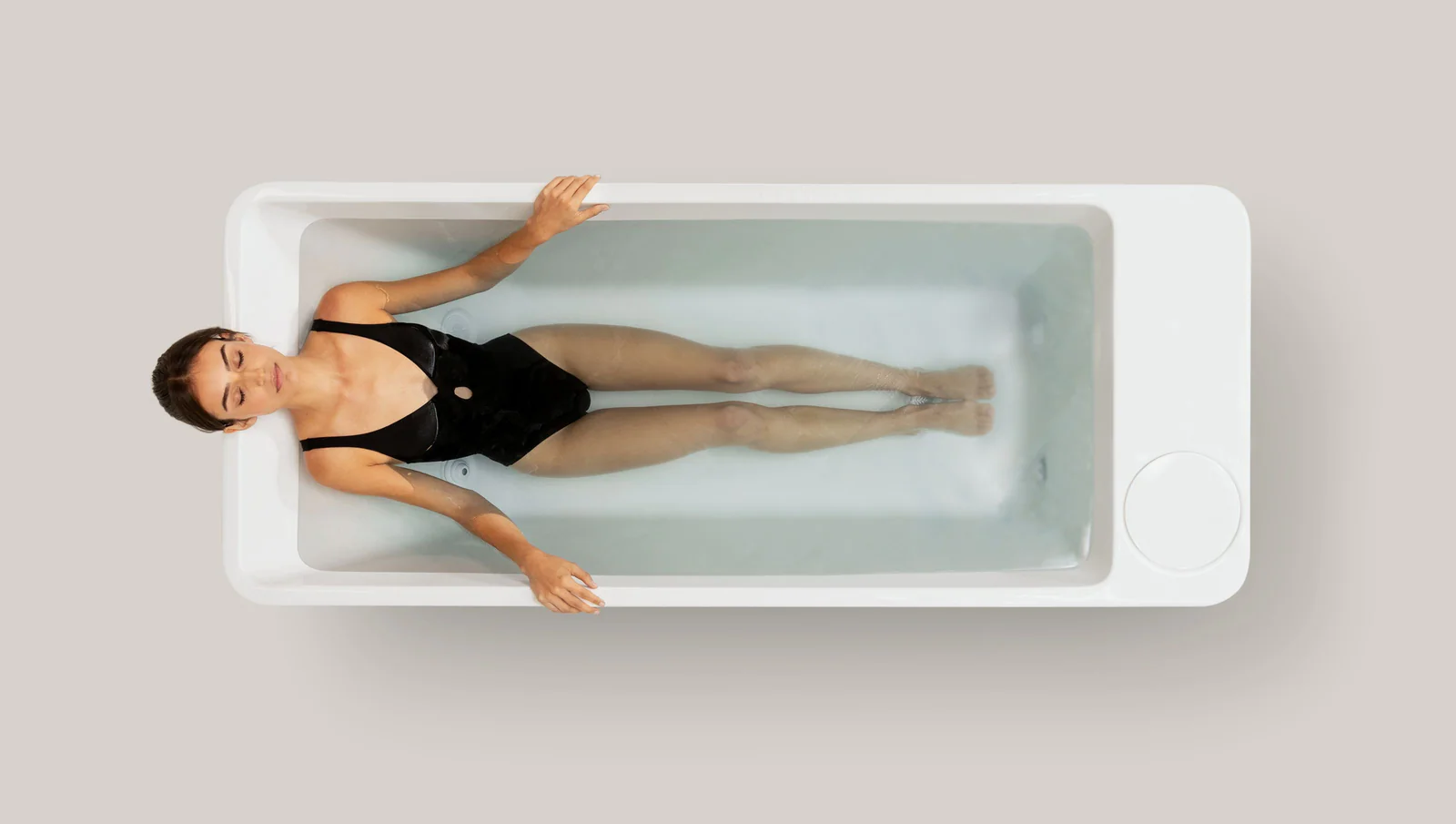
Pros
- Can be used as a cold plunge and a hot tub.
- Powerful water filtration.
- Fantastic cooling speed (10-12 degrees per hour).
- Smartphone connectivity.
- Integrated cooling and filtration system (no external chiller required).
Cons
- Much more expensive than plunges that use an external chiller.
- The extended warranty costs extra.
Released in 2023, the Plunge All-In functions as both a cold plunge and a hot tub, with the ability to heat the water up to 104 degrees.
On the cold plunging side, it features a fully-integrated chiller and filtration system, similar to the one built into the Morozko Ice Bath (see the “coldest” section below for more on the Morozko).
The advantages of an integrated system (as opposed to a separate chiller) are better cooling performance, a smaller footprint and simplified maintenance.
For example, the Plunge All-In can cool the water down to 37 degrees Fahrenheit (two degrees colder than the standard Plunge model), and replacing sediment filters is super convenient thanks to an easy access filter cover on the side of the tub.

The Plunge All-In features also features the roomiest interior of any option on this list (even larger than the Plunge XL), which should provide enough space for even the tallest plungers. Plus, the tub features smartphone connectivity, making it easy to control the plunge so it’s ready when you are.
The Plunge All-In retails for $9,590, and you can get $250 off by using the promo code MK during checkout.
If you don’t care about the hot tub feature but like the larger interior and integrated chiller, you can get the cold-only Plunge All-In for $600 less, before the discount.
Cheapest Worth Buying: Ice Pod Pro
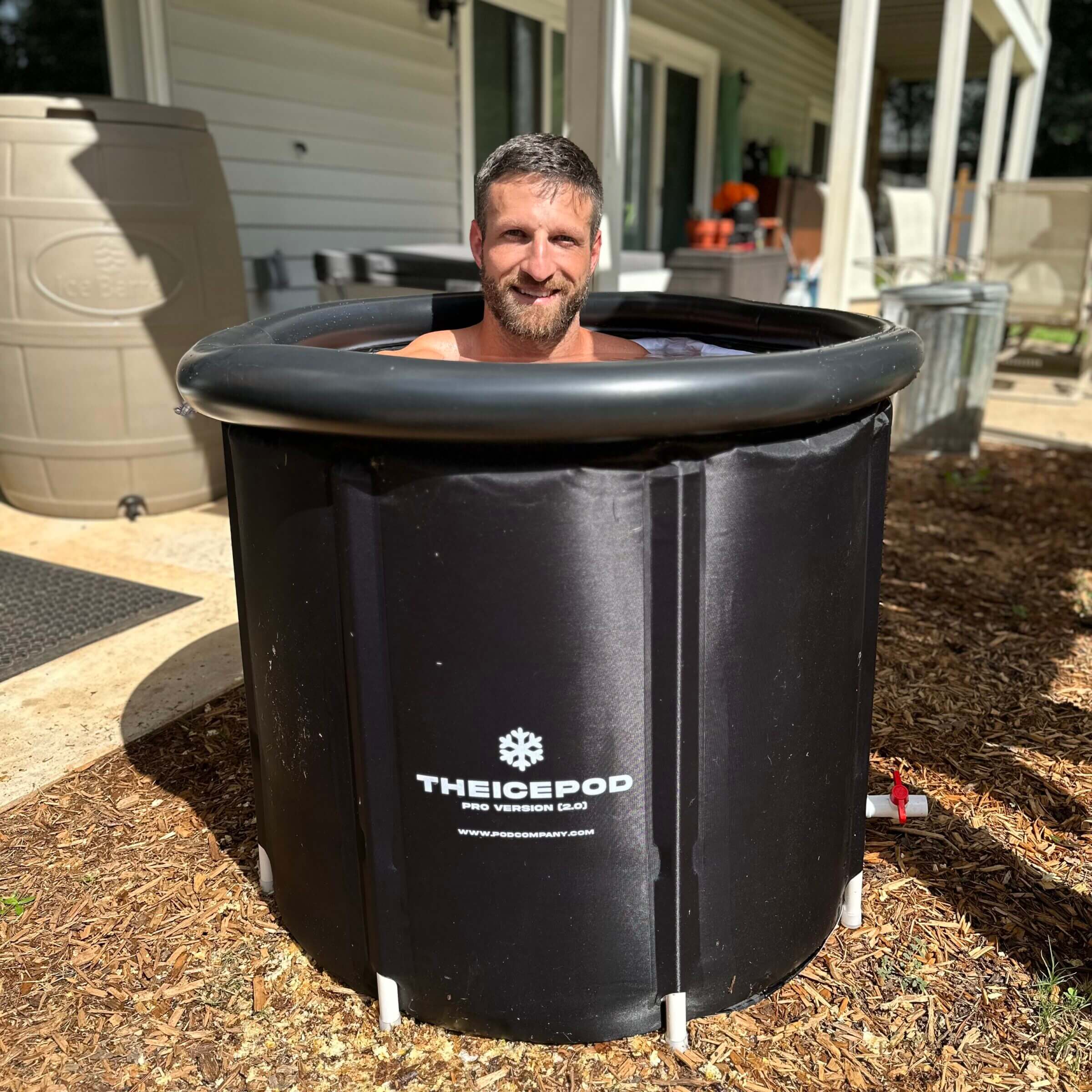
Pros
- Very inexpensive.
- Ultra-portable.
- Small footprint.
Cons
- The optional chiller doesn’t filter the water.
- Flimsy in comparison to higher-priced options.
If you want to make cold plunging a regular part of your routine but don’t have the budget to shell out thousands of dollars, the Ice Pod Pro from The Pod Company might be your best bet.
Made from lightweight, insulated and UV-resistant materials, the Ice Pro Pro is ultra-portable and easy to use. When fully inflated, the tub holds about 79 gallons (300 liters) of water and ice, and it’s large enough to fit people up to six and a half feet tall. I’m six feet tall, and I fit comfortably in the relatively small tub.
While the tub has an insulating middle layer wedged between the durable outer peach skin fabric and the waterproof PVC plastic layer, don’t expect the water inside to remain cold for extended periods — especially when using the tub in warmer climates.
What’s neat about the Ice Pod Pro is that you can use it with an ice maker (the most cost-effective way if you don’t plunge daily) or with an optional chiller. Technically, you can hook up any third-party chiller, but the company also sells a standard and pro chiller for $999 and $1,499, respectively.
The downside to those chillers is that they don’t filter the water, unlike some of the more expensive options that come with the cold plunges listed above.
The Ice Pod Pro retails for just $149. For $40 more, you can get an insulated cover, a floating thermometer and an extended warranty.
If you want to spend even less, you can opt for the standard Ice Pod, which has less insulation and no UV-resistant fabric. Frankly, I’d spend 40 extra bucks to get the Pro version, even if you’re a beginner.
Make sure to use my discount code mkummer to get $10 off your purchase.
Best For Small Spaces: Inergize Cold Plunge
Pros
- Small footprint makes it ideal for garages and patios.
- Excellent cooling and filtration performance.
- Minimal maintenance requirements.
Cons
- Low-quality touchscreen that’s hard to use in direct sunlight.
- Interior dimensions may be too small for some people.
- Relatively high price for an inflatable plunge.
The Inergize is an inflatable cold plunge tub specifically designed for use in relatively small spaces like garages and patios. In fact, it’s 9 inches shorter, and 2.5 inches narrower, than its closest competitor the TheraFrost, while offering almost identical chilling and filtration performance. It’s also $1,000 cheaper.

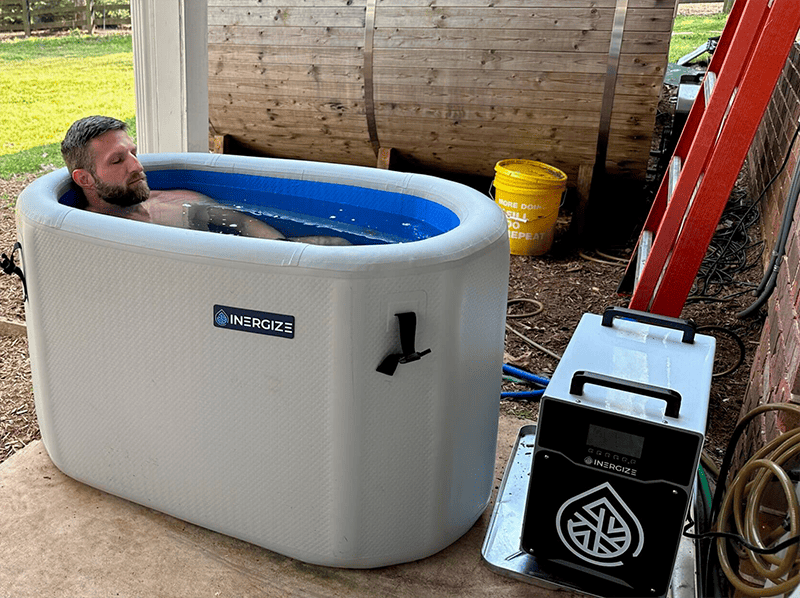

Of course, the sacrifice you make for that smaller footprint is some level of comfort. I’m six feet tall and can sit in the Inergize comfortably, but I can’t scoot back far enough to submerge my head, and I think that if I were much taller I would feel cramped. At that point, there would be no real advantage over a barrel-style plunge (like the Ice Barrel 300 or the Ice Pod Pro), which give you an even smaller footprint in exchange for having to stand or squat.
Learn more about my experience in my Inergize cold plunge review, and if you decide to buy it, be sure to use code MICHAELKUMMER at checkout to get $150 off the purchase price.
Best Upright or Sitting Tub: Polar Monkeys Star Treatment 2.0
Pros
- The built-in seat offers a compromise between traditional and barrel-style tubs.
- Has excellent insulation that holds water temperature for days.
- The chiller is powerful enough to make ice.
Cons
- Depending on the ambient temperature, you can expect some condensation around the hoses and around the internal components of the chiller.
- In ice-making mode, water filtration is reduced.
The Star Treatment 2.0 stands out from other barrel-style (upright) cold plunges thanks to a relatively quiet chiller that’s powerful enough to make ice, outstanding water-filtration capabilities, and a premium stainless steel/cedar construction.
Arguably one of the key selling points of the Star Treatment 2.0 is its powerful 1-horsepower chiller, which not only cools water rapidly but is capable of making actual ice — something few chillers can do. This ensures the tub maintains extremely low temperatures for those who prefer a true ice bath experience.
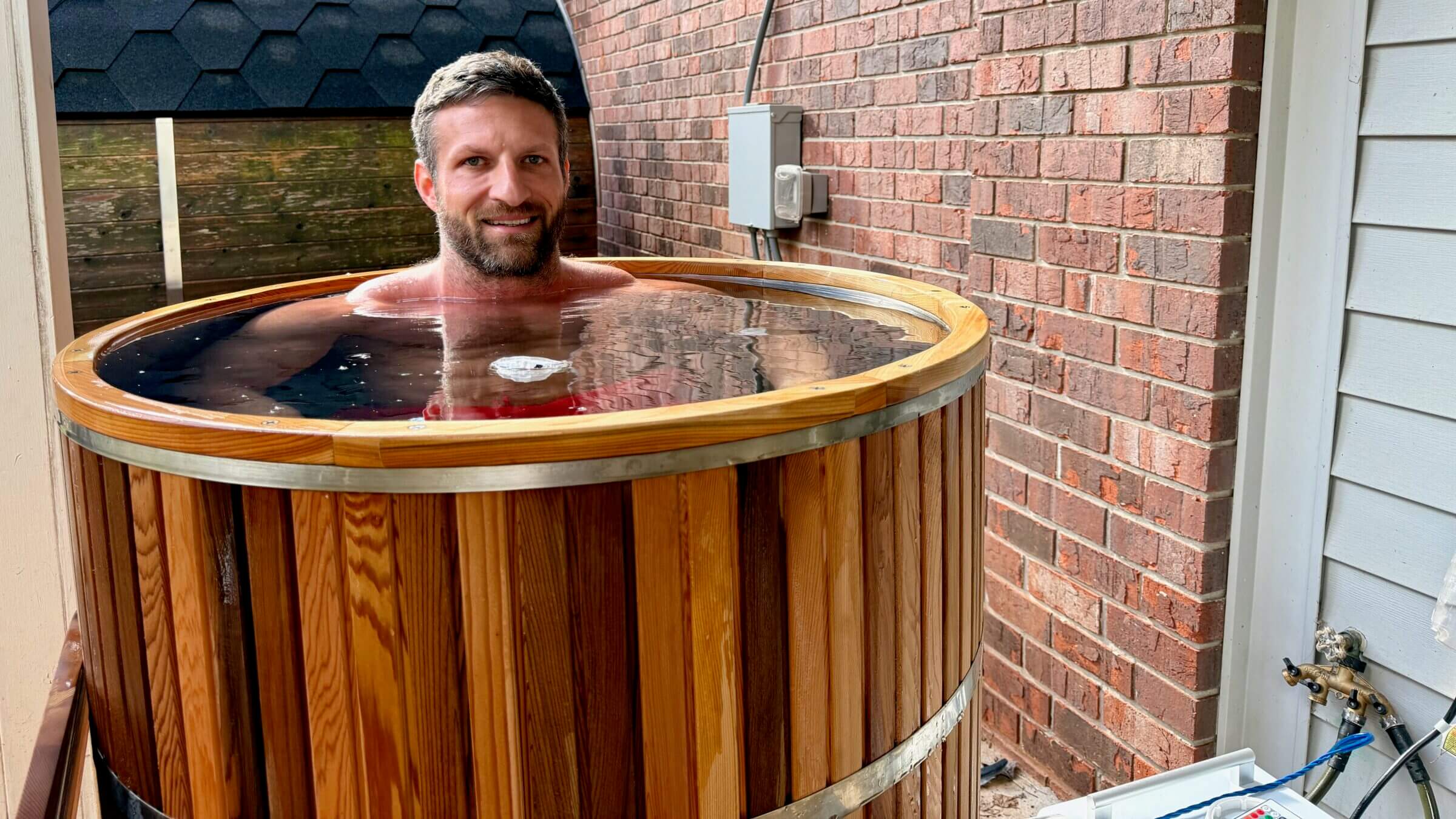


Despite its strength, the chiller operates surprisingly quietly, meaning you won’t feel the need to turn it off due to excessive noise — a common issue with other cold plunge setups, including the first-generation Evolve Standard chiller I received with the Plunge Air.
Ergonomics also play a crucial role in making a cold plunge practical and comfortable, and the Star Treatment 2.0 delivers in this area. The tub is designed for easy entry and exit, especially with the included step stool. However, people with mobility limitations might find it less accessible, as it’s still a deep barrel-style tub.
Another highlight is the tub’s filtration and circulation system, which does a good job of keeping the water clean and sanitary. However, some users might find that the water movement isn’t quite strong enough to break the skin’s thermal barrier (an effect that can enhance the cold plunge experience by preventing the body from forming a warm insulating layer). A bit more agitation would improve both cooling efficiency and filtration performance.
At just under $7,000, the Star Treatment isn’t cheap. But considering the premium materials, durability and high-performance chiller, it offers solid value for the investment.
If you’d like to purchase the Star Treatment 2.0, make sure to use my discount code MICHAEL for $200 off.
Best for Two People: Sun Home 2-Person Cold Plunge
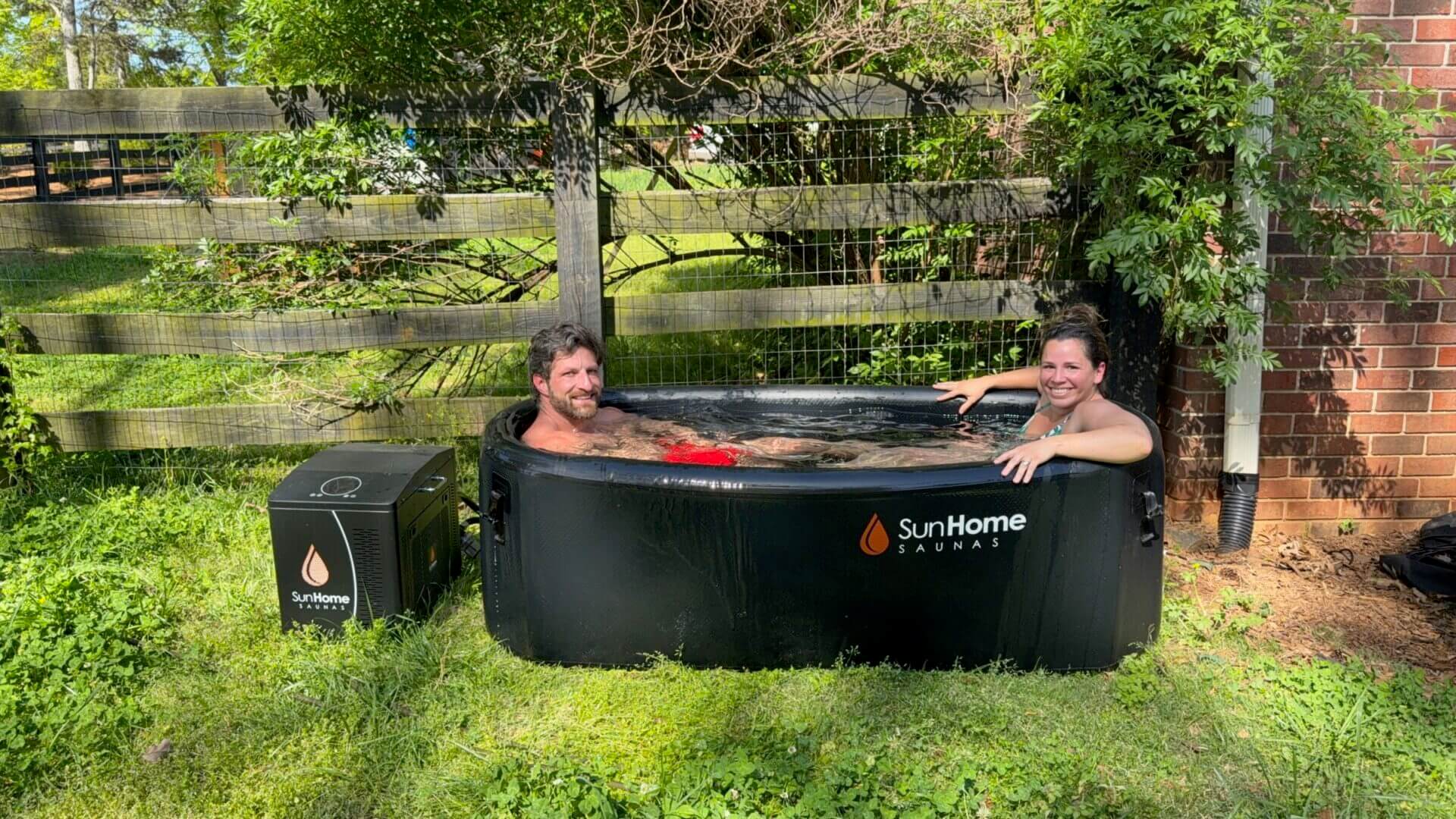
Pros
- Incredibly spacious and can fit up to two people without taking up too much floor space.
- Excellent cooling and filtration performance.
- You can use a mobile app to configure the chiller and create custom schedules (e.g., to turn it off overnight).
Cons
- As with all external chillers, the sediment filter must be replaced regularly to prevent clogs that can damage the water pump.
- Doesn’t make ice.
I love the two-person Sun Home Cold Plunge because it allows my wife and I to plunge together. While that may seem odd, we enjoy getting uncomfortable together before workouts or after sauna sessions.
The horizontal Sun Home unit is made from the same durable dropstitch material as some of the other inflatable units mentioned in this review, including the Inergize and TheraFrost.
The included 1HP chiller is powerful, relatively quiet, and features cool backlighting that glows in the dark. Much like some of the other chillers mentioned in this review, you can control it via a bright touchscreen on the front of the unit or the Sun Home mobile app. I used the app to create custom schedules that turn the chiller off every night and back on in the morning.

One thing in particular I like about this particular unit is its spaciousness without taking up too much floor space. Also, the powerful chiller can cool the water to 35° Fahrenheit or heat it to 104° Fahrenheit.
Priced around $5,000, it’s an excellent value if you enjoy plunging with a partner or friend.
Shop Sun Home 2-Person Cold Plunge
If you’re considering adding this to your home spa, make sure to use code MKUMMER200 to get $200 off your purchase.
Best Cold Plunge Tub Comparison Table
| Plunge | Lowest Temp | Capacity | Dimensions | Price | Discount Code |
|---|---|---|---|---|---|
| Sun Home Cold Plunge Pro | 33 degrees | 150 gallons | 34 x 78 x 33 | $9,599 | MKUMMER200 for $200 off |
| Morozko Forge | 33 degrees | 97 gallons | 88 x 27 x 31 | $13,900 | KUMMER500 for $500 off |
| The Plunge + Evolve Pro Chiller | 39 degrees | 105 gallons | 88 x 32 x 27 | $7,490 | MK for $250 off |
| ReGen Blast | 36 degrees | 125 | 84 x 42 x 31.5 | $8,990 | MK150 for $150 off |
| The Plunge All-In | 37 degrees | 100 gallons | 77 x 32 x 29 | $8,490 | MK for $250 off |
| Ice Pod Pro | Chiller not included | 106 gallons | 32 (Diameter) x 30 (Height) | $150 | mkummer for $10 off |
| Inergize | 37 degrees | 80 gallons | 51 x 28 x 30 | $3,990 | MICHAELKUMMER for $150 off |
| Polar Monkeys Star Treatment 2.0 | 33 degrees | 120 gallons | 34 (Diameter) x 44 (Height) | $6,850 | MICHAEL for $200 off |
| Sun Home 2-Person Cold Plunge | 35 degrees | 95 gallons | 77 x 28 x 25 | $5,099 | MKUMMER200 for $200 off |
Other Cold Plunge Tubs to Consider
There are countless cold plunge tubs on the market that might be as good or better than the ones I talk about in this article. However, while I haven’t had a chance to test all of them, I noticed many products on the market that appear to be carbon copies of the better-known brands.
Most of the lower-end tubs you can find on Amazon are made in China, and I wouldn’t necessarily trust their quality and customer support if something breaks and you need a replacement part.
That said, there are reputable companies out there that make excellent products, including cold plunge pools (which I haven’t had a chance to test yet). Here’s a list of products I’d feel comfortable recommending based on my experience with other products from the same company, or feedback from friends and family:
- TheraFrost: The TheraFrost inflatable used to be my favorite ice bath tub but has since been dethroned by the Sun Home Saunas Cold Plunge Pro. The TheraFrost’s chiller had a hard time keeping up with the relatively dusty and debis-laden environment of our backyard (thanks, in part, to the livestock we raise as part of the Kummer Homestead project). As a result, I had to replace the vacuum and water pumps a few times because they got clogged up, and that got old quickly. I know TheraFrost is working on an upgraded chiller and I’ll update this review once I’ve had a chance to put the new unit through its paces.
- Redwood Outdoors: We own a six-person barrel sauna made by Redwood Outdoors and I have nothing but good things to say about that company. As a result, I wouldn’t hesitate to invest in one of the company’s cold plunge tubs.
- Renu Therapy: The Renu Therapy Cold Stoic is another excellent option for adding a cold plunge tub to your home spa. Starting at just under $10K, Renu Therapy’s tubs are pricey but made using high-quality and customizable materials.
- Ice Barrel: We own both the Ice Barrel 400 and 500 and we really like the latter due to its ergonomic design. When paired with a chiller, an Ice Barrel can offer a relatively budget-friendly cold plunging setup.
What to Consider Before Buying a Cold Plunge Tub
The cold plunge market has exploded over the past few years, making finding an affordable option that meets your needs easier than ever. However, you should consider several essential factors before purchasing a tub (or trying to build one yourself out of an old chest freezer or rain barrel).
My article on the key factors to consider when buying a cold plunge covers this topic in detail, but here’s a brief overview of the main things to keep in mind.
Chiller or Ice Maker
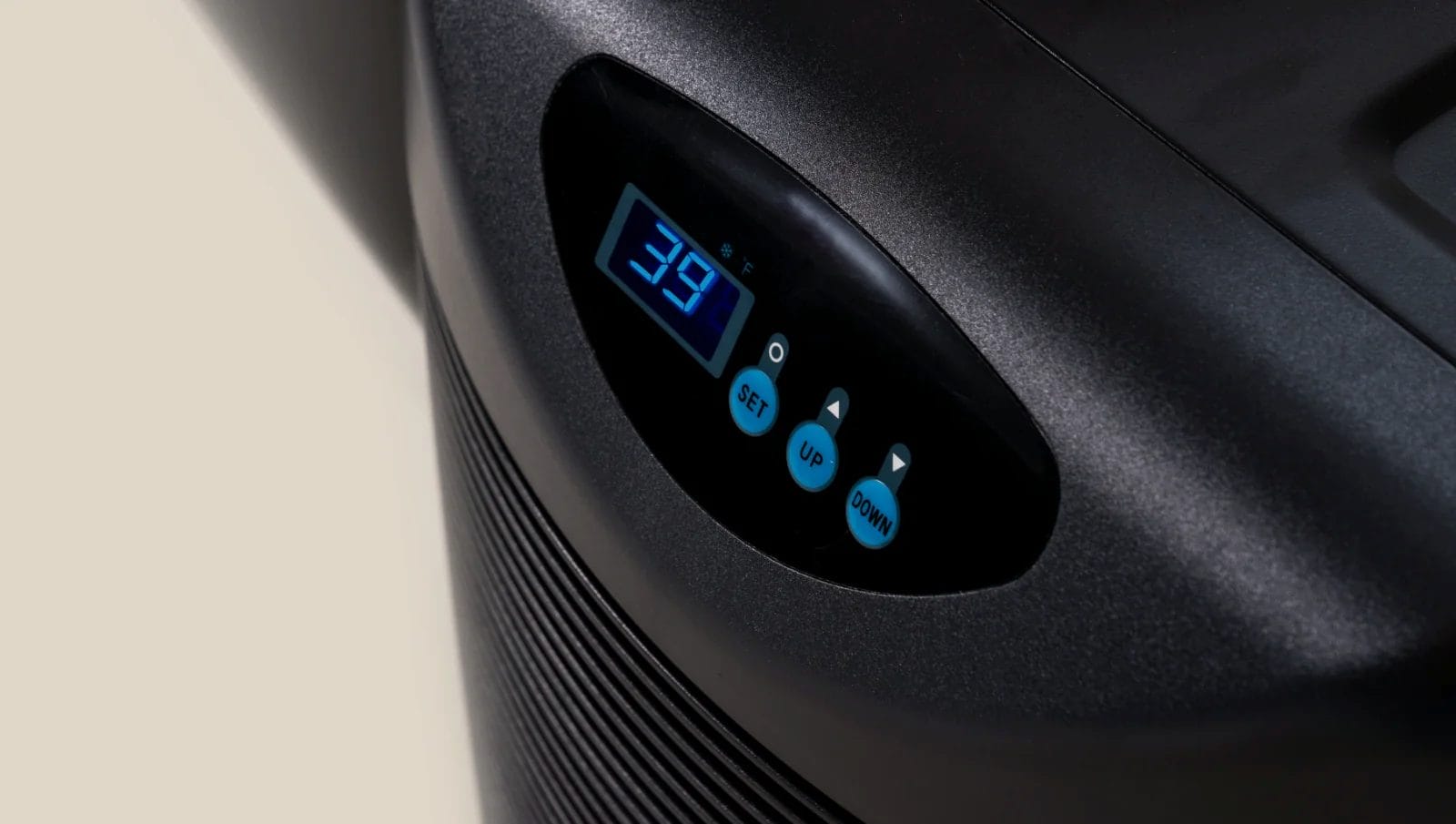
If your cold plunge doesn’t come with a chiller to keep the water at the desired temperature, you have to invest in an ice maker that can produce about 100 pounds of ice per day. Then, you need to be willing to move the ice into the tub, and wait for it to cool the water down.
If making and pouring ice into your cold plunge doesn’t sound enticing, the more convenient option is choosing a tub with a chiller that keeps the water cold 24/7 (or as long as you keep it turned on).
Choosing between a chiller and an ice maker depends on your budget and plunging frequency. An ice maker is likely more affordable, and could work if you only plan on plunging once or twice a week. Otherwise, for more regular use, I recommend a chiller.
Chiller Performance
If you plan on using your cold plunge in a commercial or athletic context (like in a gym or a sports club), it’s vital to pick a chiller that can handle back-to-back plunges.
When a person gets into an ice bath, their body heat warms the water by a few degrees. As a result, your chiller must be powerful enough to prevent the temperature from creeping up and thus reducing the plunge’s health benefits for subsequent users.
If you opt for an ice maker instead of a chiller, make sure your ice maker can produce hundreds of pounds of ice daily to keep the water cold for all plungers.
If you use your cold plunge at home, you won’t have to worry about getting the highest-performing chiller. Even when we had two or three people plunge in our tubs back-to-back, the water temperature never increased more than three or four degrees Fahrenheit above the baseline.
As I explained in my article about the health benefits of ice baths, that slightly higher water temperature isn’t likely to significantly impact the tub’s effectiveness.
Water Filtration
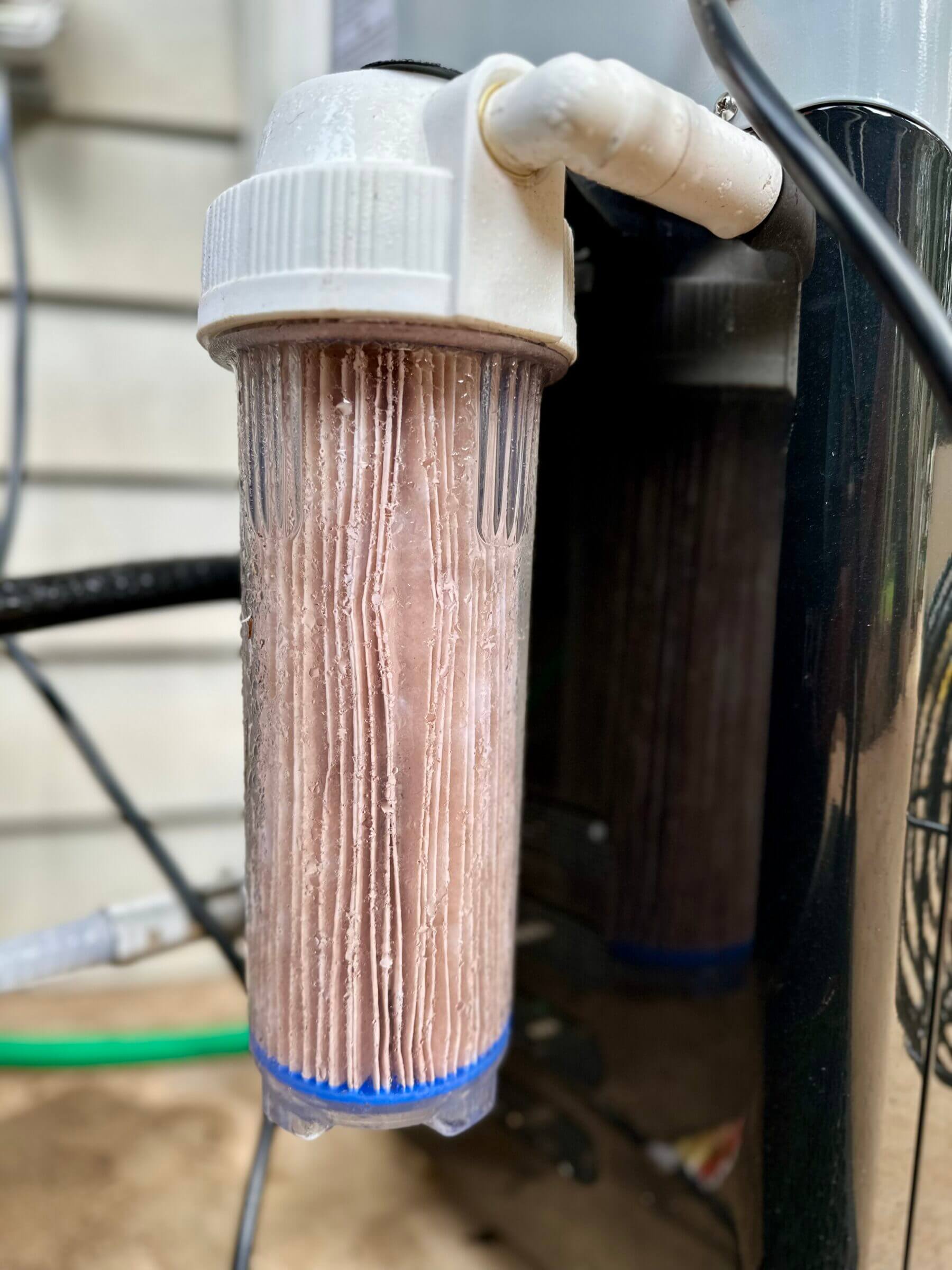
Most chillers also filter the water to keep it clean and sanitary for extended periods. Many higher-end cold plunge tubs, including some mentioned in this review, leverage ozone, ultraviolet light and sediment filters (or a combination thereof) to keep the water clean for months, thus reducing the ongoing maintenance effort.
Without water filtration, you’ll have to replace the water every few days to every few weeks, depending on what water temperature you maintain and how often you plunge. That can get expensive, especially if your home is connected to a municipal sewer system. It’s also a huge pain that may discourage you from using your tub.
Portability
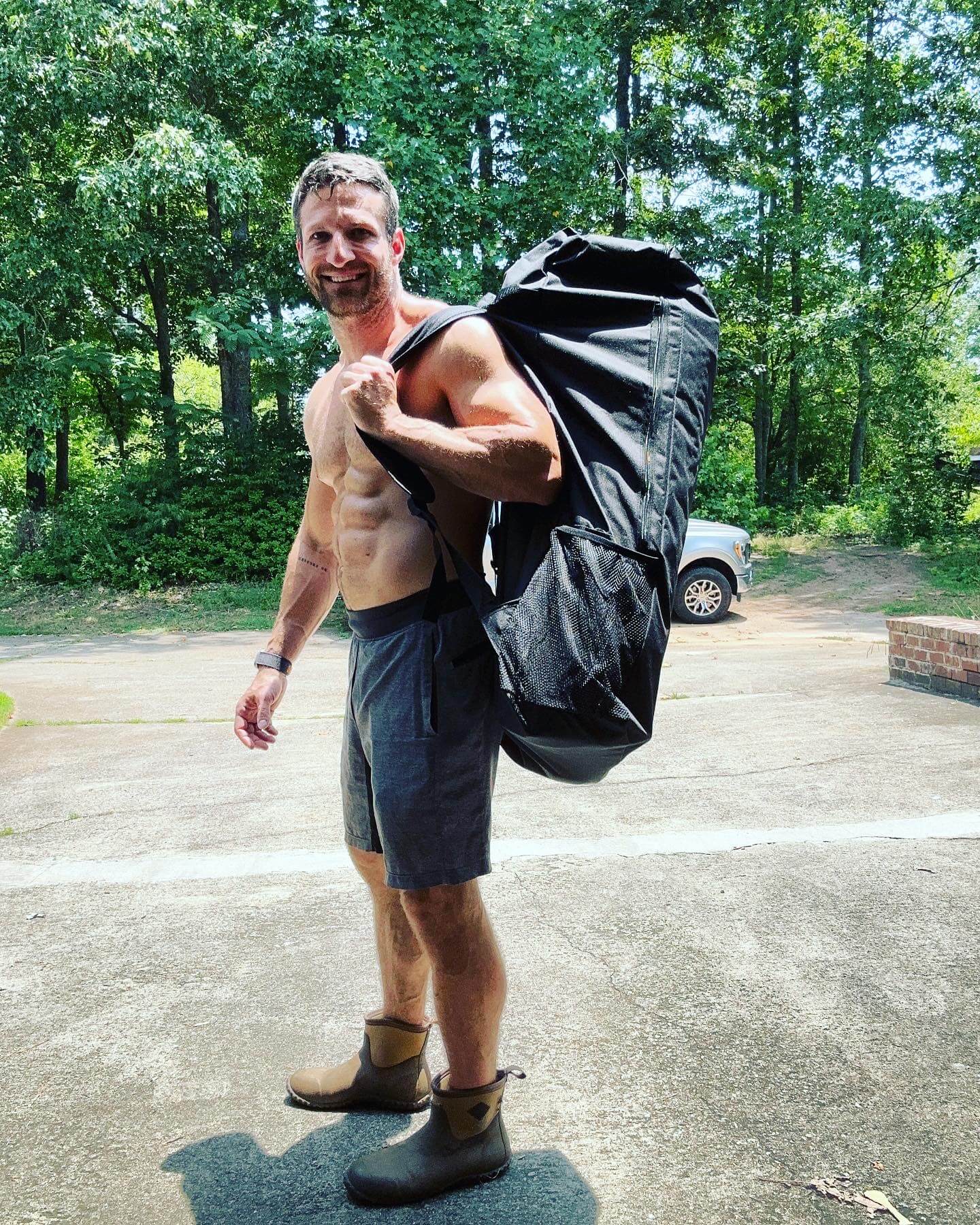
If you plan on moving your cold plunge around, or if you intend on bringing it with you on camping trips, a portable tub is the way to go. While I never planned on moving my tubs around, I did end up having to relocate them on several occasions, and I appreciated that some tubs made that task easier than others.
Pros and Cons of a DIY Ice Bath
There are several alternatives to purchasing a cold plunge tub, including the following:
- Repurposing a rain barrel, trash can or stock tank.
- Adding ice to a regular bathtub.
- Retrofitting an old chest freezer.
The advantage of a DIY ice bath is that the initial investment is relatively low (and often, zero). For example, filling your bathtub with cold water and adding ice doesn’t cost much, especially if you already own an ice maker. The same is true if you have an old rain barrel or stock tank you can repurpose.
The main problem with such DIY ice baths is that you have to add fresh ice before every plunge and frequently change the water. Even if you own an ice maker, that can get expensive if your home is connected to a public sewer, because you get charged for every gallon of water — even if that water doesn’t end up in the sewer.
If your house has a septic tank, you only pay for water, which dramatically reduces the total cost of your water consumption.
To avoid having to add fresh ice before every plunge, some people have converted an old chest freezer into a cold plunge tub. The advantage of that approach is that the freezer keeps the water cold, thus negating the need for ice. However, you’ll still have to change the water once a week or so to keep it sanitary, since freezers don’t have any water filtration capabilities.
Additionally, there is a risk of electric shock if you forget to unplug the freezer before each plunge.
For me, the downsides of DIY ice baths outweigh their pros, which is why I decided to stick with cold plunge tubs that don’t require an ice maker or constant water changes. In other words, I decided to pay for more convenience and safety.
Final Thoughts: The Best Cold Plunge Tub Depends On Your Space, Budget and Plunging Frequency
Cold water immersion gained popularity with Wim Hof (aka the Ice Man) when he demonstrated the amazing health benefits of cold therapy. I’ve been plunging for two years and have noticed significant changes in my immunity and resilience (not to mention my ability to thrive in extremely cold temperatures).
I attribute those improvements to regular cold exposure, which acts as a hormetic stressor along the lines of “what doesn’t kill you makes you stronger.”
If you have never taken a cold plunge, I highly recommend considering cold water immersion a regular part of your routine. You can even start today by taking a cold shower while you think about which cold plunge tub would work best in your situation.
If you have any questions or concerns about the health benefits of cold plunging or any of the tubs mentioned in this article, just leave a comment below!

Michael Kummer is a healthy living enthusiast and CrossFit athlete whose goal is to help people achieve optimal health by bridging the gap between ancestral living and the demands of modern society.
Medical Disclaimer
The information shared on this blog is for educational purposes only, is not a substitute for the advice of medical doctors or registered dieticians (which we are not) and should not be used to prevent, diagnose, or treat any condition. Consult with a physician before starting a fitness regimen, adding supplements to your diet, or making other changes that may affect your medications, treatment plan or overall health. MichaelKummer.com and its owner MK Media Group, LLC are not liable for how you use and implement the information shared here, which is based on the opinions of the authors formed after engaging in personal use and research. We recommend products, services, or programs and are sometimes compensated for doing so as affiliates. Please read our Terms and Conditions for further information, including our privacy policy.


Hi Michael, thank you for the excellent review. I was looking into getting the Plunge but it’s a little above my price range. I’m leaning towards the Ice Barrel 500 but I would like to pair it with a chiller/filter. Do you have a favorite 3rd party chiller?
Hey Ryan,
Thanks for reaching out! Frankly, I have not looked at third-party chillers yet. All my experience is based on chillers that came with the various plunges I own. However, I can tell you that the new chiller from Plunge is top notch and I also heard good things about the one Ice Barrel sells.
I’d look for one that has 3/4 to 1 HP (depending on your location and planned use frequency) and includes ozone filtration. Noise levels may also be a consideration, depending on where you plan on using it.
I hope that helps!
Cheers,
Michael